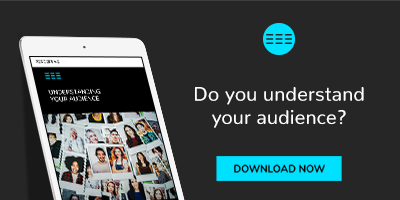While there are no blanket rules when it comes to segmentation, it’s important to note how market and customer segmentation can differ depending on the type of buyer your product or service appeals to, especially if you’re a business that sells to other businesses.
With that in mind, here are three need-to-knows about B2B segmentation.
Related content: Understanding Your Audience [Free Online Guide]
1. B2B is more dynamic than B2C
By 'dynamic' we mean in the scale and complexity of all organisations that fall under the umbrella of B2B and the way they buy. At one end, we have sole traders, who might run something as simple as a hobby business in their free time and make all the buying decisions themselves. On the other end, we have multinational corporates with thousands of employees and shareholders that have extensive tender processes and require suppliers to submit proposals to multiple stakeholders.
“The difference from one end of the scale to the other is ginormous,” says Dan Shaw, Managing Director at Perceptive. “Although B2B is smaller than B2C when it comes to the number of customers, it’s actually more complex, and it’s rare to see a B2B company that offers products or services across the entire business spectrum.”
This complexity and the vast array of business buying methods is something you should be aware of if you’re a B2B business looking to segment your customers, particularly if you’re incorporating buying behaviour into your segments.

2. Defining your B2B audience is challenging but crucial
Following on from the point above is the challenge B2Bs can have in defining their audience. While some B2B businesses may have broad appeal across multiple industries, such as accounting or human resources software, other B2Bs operate within specific niches. However, those niches can still contain a variety of business sizes and buying complexities you need to understand and assess how well they fit your B2B offering.
“Most B2B companies can’t sell their product to every business,” says Dan. “So, defining who their target audience is from the businesses they can sell to is really important.”
Because of the buying complexities in so many businesses, it’s essential to do the work to define your audience and build a strong understanding of them and how they operate. Luckily, segmentation is an excellent tool for doing just that.
3. Don’t discount the person behind the business
Historically, B2B buyers have been typecast as highly rational, logical buyers, sometimes with multiple stakeholders to please and budget constraints to fit into. However, while some of that is true, there is mounting evidence that B2B and B2C have more in common than they do different.
While it’s true B2B consumers have many and varied buying behaviours and complexities of scale, the people behind these organisations share one crucial, overarching element with B2C. Their key decision-makers are still people. Emotions will drive their buying regardless of whether they’re buying in a B2B or B2C situation.
“B2B buying is far more emotionally driven than we think,” says Dan. “And there’s an emotive component of B2B buying that your segmentation needs to understand. Why did these people get into business? What are their main goals and motivators? Take sole traders, for instance. They make up 70 per cent of businesses in New Zealand[1]. Those people are their business, and their business reflects who they are. If their business fails, they fail. There are some deep emotional drivers there that compel them to do what they do, and it’s important for B2B sellers to understand them and use them to connect on a personal level.”
The pitfall to avoid: hyperrational B2B segments
This is where B2B segmentation often comes unstuck—it fixates on all the rational, analytical thinking B2B buyers go through and forgets the emotions that spur that thinking in the first place. If you want to truly understand your B2B segments, you need to go beyond understanding how they behave and delve deeper into why.
Learn more about the power of segmentation and how it can enhance your marketing and cut-through with our all-in-one guide: Understanding Your Audience.
